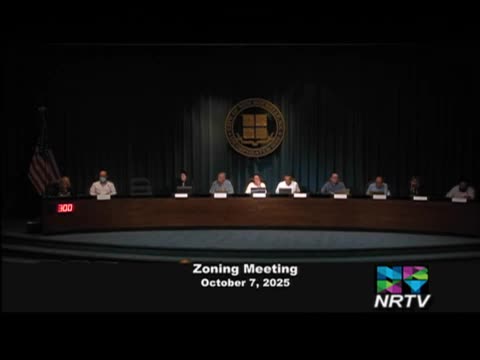Zoning Board Considers Variance Request for Second Floor Expansion at 35 Ernest Drive
October 07, 2025 | New Rochelle, Westchester County, New York
This article was created by AI summarizing key points discussed. AI makes mistakes, so for full details and context, please refer to the video of the full meeting. Please report any errors so we can fix them. Report an error »

In the heart of New Rochelle's city hall, a discussion unfolded that could reshape a family's living space. The atmosphere was charged with anticipation as city officials reviewed a zoning application that sought to expand a modest home on Ernest Drive. The proposal, which had been under scrutiny in previous meetings, aimed to add a mere 150 square feet to an existing nonconforming lot, a space that was already undersized and narrow.
The applicant, Gordon Bridal, presented the revised request, clarifying that the initial figure of 360 square feet had been misleading. Upon further examination, it became clear that 200 square feet of that request was already part of the existing structure, effectively reducing the new request to a more manageable size. The goal was straightforward: to create an additional bedroom to accommodate the family living there, enhancing their quality of life without altering the home's footprint or increasing impervious surfaces.
As the discussion progressed, it became evident that the proposed changes would have minimal impact on the overall massing of the house. The zoning board members listened intently, weighing the implications of the variance request against the backdrop of community standards and regulations. The existing floor area ratio (FAR) of the home was already above the permitted limit, which added a layer of complexity to the decision-making process.
After a brief exchange of questions and clarifications, the atmosphere shifted as a board member moved to approve the variance. This decision, while seemingly small in the grand scheme of urban development, represented a significant step for the family seeking to adapt their home to better suit their needs. As the motion passed, it underscored the delicate balance between individual aspirations and community regulations, a theme that resonates deeply in the ongoing dialogue about zoning and development in New Rochelle.
The applicant, Gordon Bridal, presented the revised request, clarifying that the initial figure of 360 square feet had been misleading. Upon further examination, it became clear that 200 square feet of that request was already part of the existing structure, effectively reducing the new request to a more manageable size. The goal was straightforward: to create an additional bedroom to accommodate the family living there, enhancing their quality of life without altering the home's footprint or increasing impervious surfaces.
As the discussion progressed, it became evident that the proposed changes would have minimal impact on the overall massing of the house. The zoning board members listened intently, weighing the implications of the variance request against the backdrop of community standards and regulations. The existing floor area ratio (FAR) of the home was already above the permitted limit, which added a layer of complexity to the decision-making process.
After a brief exchange of questions and clarifications, the atmosphere shifted as a board member moved to approve the variance. This decision, while seemingly small in the grand scheme of urban development, represented a significant step for the family seeking to adapt their home to better suit their needs. As the motion passed, it underscored the delicate balance between individual aspirations and community regulations, a theme that resonates deeply in the ongoing dialogue about zoning and development in New Rochelle.
View full meeting
This article is based on a recent meeting—watch the full video and explore the complete transcript for deeper insights into the discussion.
View full meeting
